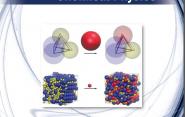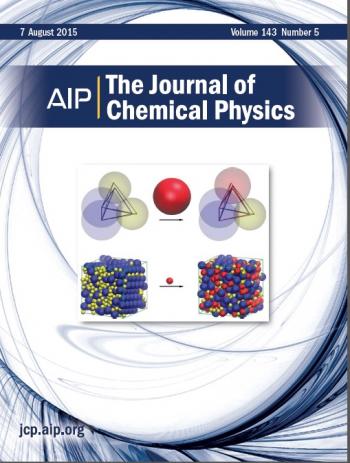Yale Study Makes Cover The Journal Of Chemical Physics

This week, the work of Yale’s Center for Research on Interface Structures and Phenomena (CRISP) is featured on the cover of the Journal of Chemical Physics.
The study, “On the Origin of Multi-Component Bulk Metallic Glasses: Atomic Size Mismatches and De-mixing,” looks at one aspect of the formation of bulk metallic glasses, which are complex alloys that  are both pliable and stronger than steel. They’ve been used for years in sporting equipment and other items, but researchers believe the material has a much wider range of applications - biomedical technology and consumer electronics, for instance. But there are a number of questions about how best to make bulk metallic glasses.
are both pliable and stronger than steel. They’ve been used for years in sporting equipment and other items, but researchers believe the material has a much wider range of applications - biomedical technology and consumer electronics, for instance. But there are a number of questions about how best to make bulk metallic glasses.
The conventional wisdom among researchers in the field is that bulk metallic glasses should contain three or more atomic species, and that those components should have atomic size differences greater than 12 percent (more components with different atomic sizes, it’s believed, creates a “confusion” that delays crystallization). The CRISP researchers tested this conventional wisdom by performing computer simulations of ternary hard-sphere systems. This model has been shown in the researchers' previous work to be quantitatively accurate for determining the glass-forming abilities of bulk metallic glasses.
What they found was that when they had three components with a diameter ratio close to 1, the glass-forming abilities were no better than when it’s being made with two components with the same range of atomic sizes as the three-component group. That’s because the differences in size allowed the largest and smallest components to become well mixed. When there are two components with a diameter ratio of less than 0.8, though, the researchers found that the glass-forming abilities were enhanced by the addition of a third component – this one being of intermediate size. This third component kept the other components from separating, or demixing.
But if it’s true that a picture is worth a thousand words, then the image of the journal’s cover above is more than twice as good as the rest of this post. The left side of the picture shows how the two components close in size mix (not particularly well), and the right side shows what happens when the intermediate-sized third atom is added (you get a more uniformly mixed system).
It’s a great image, certainly, with a nice array of colors of shapes. But how much of a role do aesthetics play in making the cover of the Journal of Chemical Physics? We asked Dr. Marsha I. Lester, editor of the journal.
“I would say that excellent science is first and foremost for highlighting an article,” she says in an email. “A nice eye-catching image also helps!”
The paper’s authors are Corey O'Hern, Jan Schroers, Kai Zhang, Yanhui Liu, Mark D. Shattuck, and Bradley Dice.

